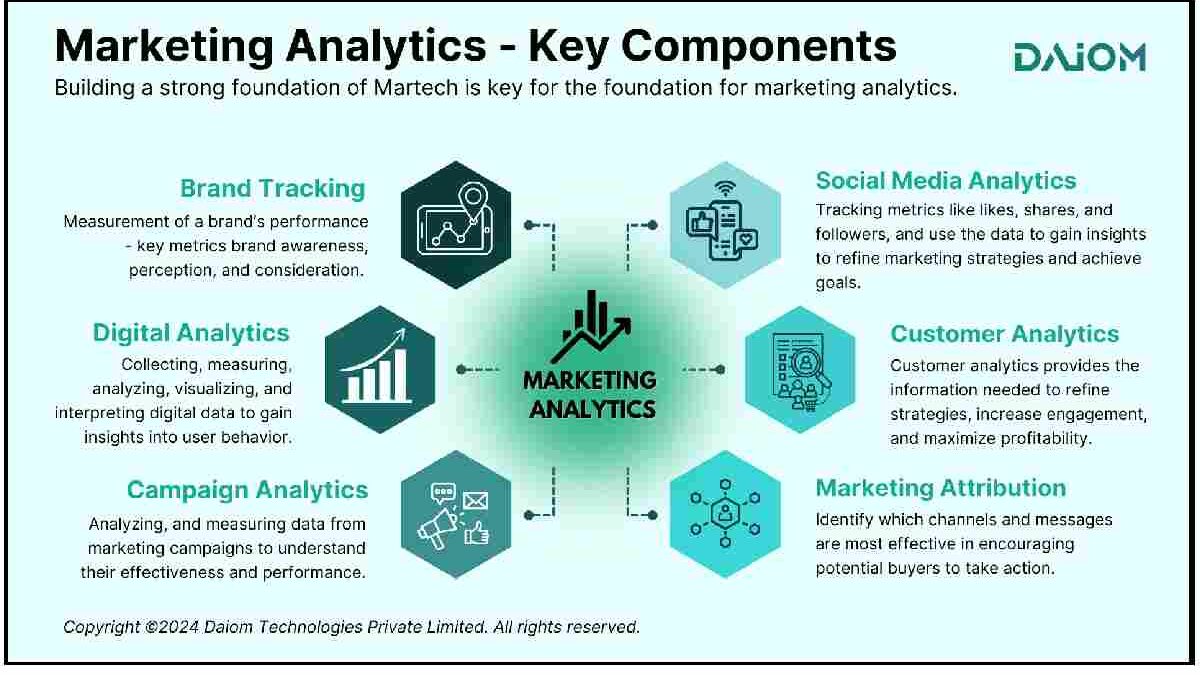Table of Contents
Making Marketing Analytics Simple
Making Marketing Analytics Simple: Is the study of data to assess the effectiveness of marketing activities.
By applying technology and analytic processes to marketing-related data, businesses can comprehend what motivates consumer behavior, refine their marketing campaigns, and maximize their return on investment.
History of marketing analytics
Presently after the invention of the printing press, advertisements began to appear.
- Business intelligence did not enter the public lexicon until 1865 when banker Sir Henry Furness described beating his competitors by analyzing his marketing and promotional techniques.
- The University of Pennsylvania introduced the first marketing course in the world fifty years later.
- In 1942, when television advertisements aired, businesses recognized the importance of determining which advertisements converted viewers into customers.
How did marketing analytics work?
Marketing analytics calls for more than just flashy software. Marketing teams require a strategy that contextualizes all their data. Here is how marketing analytics works for the majority of businesses.
1. Identify what you want to measure
- Define precisely what you hope to achieve with your marketing efforts.
- Start with your marketing strategy’s overarching objective, then drill down into specific campaigns and marketing channels.
- Metrics can include ROI, conversion, click-through, and brand recognition.
- You should also establish benchmarks and milestones to help you evaluate and modify your marketing strategies.
2. Practice a balanced assortment of analytic techniques and tools
You’ll need various techniques and tools to derive the most value from marketing analytics. Utilize metrics to:
Describe the past. Using techniques that examine the past, you can answer questions such as, “Which campaign components generated the most revenue during the previous quarter?”
How did social media marketing campaign A compare to direct mail marketing campaign B?
How many leads did these webinar series generate versus that podcast season?
Consider the present. Determine the current status of your marketing initiatives. How do our customers interact with us? Which channels are preferred by our most profitable customers?
Who is discussing us and where?
Forecast or affect the future. Marketing analytics can help you shape the future through data-driven predictions.
You can answer questions like, “How can short-term victories be transformed into loyalty?”
How will the addition of additional sales representatives in underperforming regions impact revenue? Which cities should we focus on next?
3. Measure your analytic capabilities, and seal in the gaps
- The Marketing analytics technology is plentiful, so it can be challenging to determine which tools are indispensable.
- However, it would help if you began with your overall capability.
- Measure your current capabilities to determine where you stand on the spectrum of analytics.
- Then, identify the voids and devise a plan for filling them.
4. Act on what you learn
Utilizing data is currently one of the most significant challenges marketing professionals face. It is just so.
- Much. Step 1 is important: if you realize that your current actions are not helping you achieve your objectives, you know it’s time to test and iterate.
- Applied holistically, [marketing analytics] enables more effective marketing campaigns and a more satisfying customer experience overall.
- In particular, when implemented, marketing analytics can result in improved source and demand planning, price optimization.
- And robust leadership development and management – all of which contribute to increased profitability.

